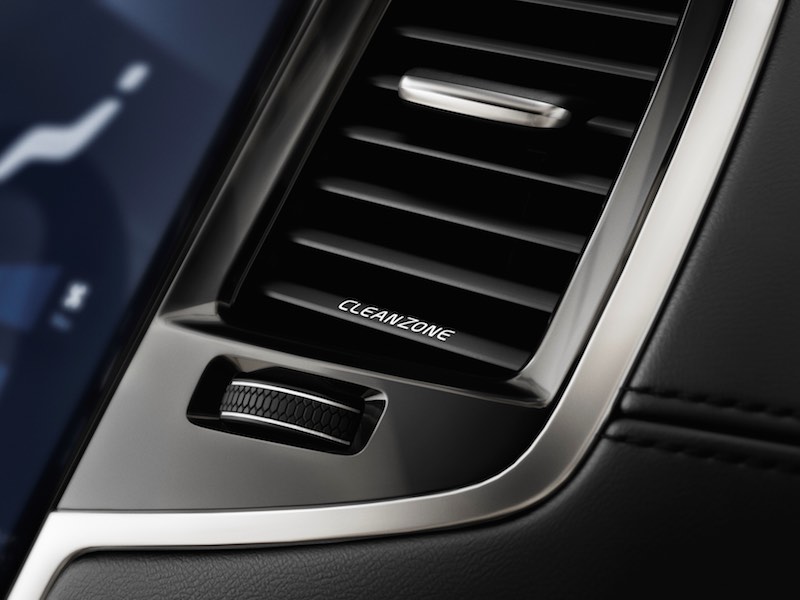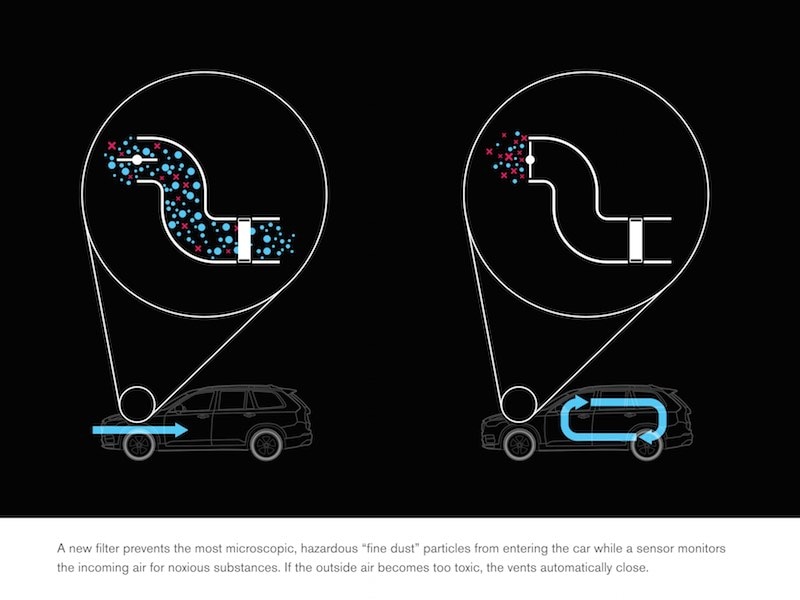Recent Articles
Popular Makes
Body Types
All About Volvo Clean Zone and its Enhanced Multi-Filter

volvo clean zone vent ・ Photo by Volvo Cars
Volvo’s Interior Air Quality System (IAQS) is designed to clean the air inside the vehicle to reduce the risk of difficulties for drivers and passengers with asthma, allergies, or other sensitivities. Like most other cabin air filtration systems, the Interior Air Quality System uses a filter to remove particles such as pollen from the air. Unlike traditional systems, however, vehicles with IAQS use a multi-filter that is impregnated with active carbon that can absorb odors and gases (most newer models equipped with the standard pollen filter can upgrade to the optional multi-filter during regular service intervals). The IAQS also uses a special sensor that detects substances such as nitrogen oxides, carbon monoxide, and hydrocarbons in the surrounding air (when driving through a tunnel, for example). When the concentration of any of these substances gets too high, the system can close the air intake and instead recirculate the air inside the cabin. When outside air quality improves, the system automatically opens again, allowing fresh air into the car.
In 2015, the Volvo XC90 will debut the enhanced multi-filter to improve interior air quality even further. The enhanced multi-filter is larger and more efficient, keeping the amount of fine dust particles smaller than 0.4 μm up to 70% lower than in cars without the filter. Together with the sensor, the multi-filter can keep out a number of irritating and harmful pollutants such as nitrogen oxides, hydrocarbons, ground level ozone, and unpleasant odours.
The Clean Zone Interior Package (also known as CZIP or simply Clean Zone) uses the Electronic Climate Control (ECC) system and IAQS to ventilate the interior of the car before you get into it. The system automatically starts when the car door is unlocked and the temperature is above 50°F (10°C). Especially in hot climates, hydrocarbons can evaporate from plastics and textiles, and the ventilation system can remove emissions and odours that build up while the car is parked, decreasing in power as the contaminants are removed. Partially thanks to this system, the Volvo S80 with the CZIP package was the first car to meet the high standards of the Swedish Asthma and Allergy Association.

Photo by Volvo Cars
Volvo also works to ensure that the interior itself is as "clean" as possible. The interior upholsteries and textiles are designed to be as allergen free as possible. Leather is tanned using vegetable substances instead of the traditional chromium, interior metal components are tested for contact allergies, and generally the materials used are less toxic with fewer harmful additives. Members of the Volvo cars Nose Team smell different parts to determine if the odour is acceptable or too pungent. That "new car smell" is actually caused by emissions from the interior components which may irritate hypersensitive people.
Vehicles are put through a sun simulator test, which heats the interior of the car to 149°F (65°C), simulating a car parked on a hot summer day. The amount of Total Volatile Organic Compounds (or TVOCs) which can cause headaches, nausea, and dizziness, and aldehydes (such as formaldehyde) which can cause respiratory and contact allergies, are measured, with strict limits on emissions. The interiors are additionally designed to be easy to clean, so that dust accumulation is minimized. Materials such as allergy tested natural rubbers are used in both the passenger and luggage compartments.
The IAQS system is available on most Volvo models, including the S60, S80, V60 (and V60 Cross Country), XC60, XC70, and XC90. The enhanced multi-filter will first appear in the XC90 at the beginning of 2015.

Photo by Volvo Cars